Great Astronomers by Robert Stawell Ball (uplifting novels .txt) 📕
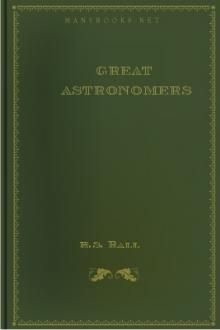
- Author: Robert Stawell Ball
- Performer: -
Book online «Great Astronomers by Robert Stawell Ball (uplifting novels .txt) 📕». Author Robert Stawell Ball
we have already mentioned.
[PLATE: ASTRONOMETER MADE BY SIR J. HERSCHEL to compare the light
of certain stars by the intervention of the moon.]
The surroundings among which the young astronomer was reared
afforded him an excellent training for that career on which he was
to enter, and in which he was destined to attain a fame only less
brilliant than that of his father. The circumstances of his youth
permitted him to enjoy one great advantage which was denied to the
elder Herschel. He was able, from his childhood, to devote
himself almost exclusively to intellectual pursuits. William
Herschel, in the early part of his career, had only been able to
snatch occasional hours for study from his busy life as a
professional musician. But the son, having been born with
a taste for the student’s life, was fortunate enough to have been
endowed with the leisure and the means to enjoy it from the
commencement. His early years have been so well described by the
late Professor Pritchard in the “Report of the Council of the
Royal Astronomical Society for 1872,” that I venture to make an
extract here:—
“A few traits of John Herschel’s boyhood, mentioned
by himself in his maturer life, have been treasured up by those
who were dear to him, and the record of some of them may satisfy a
curiosity as pardonable as inevitable, which craves to learn
through what early steps great men or great nations become
illustrious. His home was singular, and singularly calculated to
nurture into greatness any child born as John Herschel was with
natural gifts, capable of wide development. At the head of the
house there was the aged, observant, reticent philosopher, and
rarely far away his devoted sister, Caroline Herschel, whose
labours and whose fame are still cognisable as a beneficent
satellite to the brighter light of her illustrious brother. It
was in the companionship of these remarkable persons, and under
the shadow of his father’s wonderful telescope, that John Herschel
passed his boyish years. He saw them, in silent but ceaseless
industry, busied about things which had no apparent concern with
the world outside the walls of that well-known house, but which,
at a later period of his life, he, with an unrivalled eloquence,
taught his countrymen to appreciate as foremost among those living
influences which but satisfy and elevate the noblest instincts of
our nature. What sort of intercourse passed between the father
and the boy may be gathered from an incident or two which he
narrated as having impressed themselves permanently on the memory
of his youth. He once asked his father what he thought was the
oldest of all things. The father replied, after the Socratic
method, by putting another question: ‘And what do you yourself
suppose is the oldest of all things?’ The boy was not successful
in his answers, thereon the old astronomer took up a small stone
from the garden walk: “There, my child, there is the oldest of all
the things that I certainly know.’ On another occasion his father
is said to have asked the boy, ‘What sort of things, do you think,
are most alike?’ The delicate, blue-eyed boy, after a short pause,
replied, ‘The leaves of the same tree are most like each other.’
‘Gather, then, a handful of leaves of that tree,’ rejoined the
philosopher, ‘and choose two that are alike.’ The boy failed; but
he hid the lesson in his heart, and his thoughts were revealed
after many days. These incidents may be trifles; nor should we
record them here had not John Herschel himself, though singularly
reticent about his personal emotions, recorded them as having made
a strong impression on his mind. Beyond all doubt we can trace
therein, first, that grasp and grouping of many things in one,
implied in the stone as the oldest of things; and, secondly, that
fine and subtle discrimination of each thing out of many like
things as forming the main features which characterized the habit
of our venerated friend’s philosophy.”
John Herschel entered St. John’s College, Cambridge, when he was
seventeen years of age. His university career abundantly
fulfilled his father’s eager desire, that his only son should
develop a capacity for the pursuit of science. After obtaining
many lesser distinctions, he finally came out as Senior Wrangler
in 1813. It was, indeed, a notable year in the mathematical
annals of the University. Second on that list, in which
Herschel’s name was first, appeared that of the illustrious
Peacock, afterwards Dean of Ely, who remained throughout life
one of Herschel’s most intimate friends.
Almost immediately after taking his degree, Herschel gave evidence
of possessing a special aptitude for original scientific
investigation. He sent to the Royal Society a mathematical paper
which was published in the PHILOSOPHICAL TRANSACTIONS. Doubtless
the splendour that attached to the name he bore assisted him in
procuring early recognition of his own great powers. Certain it
is that he was made a Fellow of the Royal Society at the
unprecedentedly early age of twenty-one. Even after this
remarkable encouragement to adopt a scientific career as the
business of his life, it does not seem that John Herschel at first
contemplated devoting himself exclusively to science. He
commenced to prepare for the profession of the Law by entering as
a student at the Middle Temple, and reading with a practising
barrister.
But a lawyer John Herschel was not destined to become.
Circumstances brought him into association with some leading
scientific men. He presently discovered that his inclinations
tended more and more in the direction of purely scientific
pursuits. Thus it came to pass that the original intention as to
the calling which he should follow was gradually abandoned.
Fortunately for science Herschel found its pursuit so attractive
that he was led, as his father had been before him, to give up his
whole life to the advancement of knowledge. Nor was it unnatural
that a Senior Wrangler, who had once tasted the delights of
mathematical research, should have been tempted to devote much
time to this fascinating pursuit. By the time John Herschel was
twenty-nine he had published so much mathematical work, and his
researches were considered to possess so much merit, that the
Royal Society awarded him the Copley Medal, which was the highest
distinction it was capable of conferring.
At the death of his father in 1822, John Herschel, with his tastes
already formed for a scientific career, found himself in the
possession of ample means. To him also passed all his father’s
great telescopes and apparatus. These material aids, together
with a dutiful sense of filial obligation, decided him to make
practical astronomy the main work of his life. He decided to
continue to its completion that great survey of the heavens which
had already been inaugurated, and, indeed, to a large extent
accomplished, by his father.
The first systematic piece of practical astronomical work which
John Herschel undertook was connected with the measurement of what
are known as “Double Stars.” It should be observed, that there
are in the heavens a number of instances in which two stars are
seen in very close association. In the case of those objects to
which the expression “Double Stars” is generally applied, the two
luminous points are so close together that even though they might
each be quite bright enough to be visible to the unaided eye, yet
their proximity is such that they cannot be distinguished as two
separate objects without optical aid. The two stars seem fused
together into one. In the telescope, however, the bodies may be
discerned separately, though they are frequently so close together
that it taxes the utmost power of the instrument to indicate the
division between them.
The appearance presented by a double star might arise from the
circumstance that the two stars, though really separated from each
other by prodigious distances, happened to lie nearly in the same
line of vision, as seen from our point of view. No doubt, many of
the so-called double stars could be accounted for on this
supposition. Indeed, in the early days when but few double stars
were known, and when telescopes were not powerful enough to
exhibit the numerous close doubles which have since been brought
to light, there seems to have been a tendency to regard all double
stars as merely such perspective effects. It was not at first
suggested that there could be any physical connection between the
components of each pair. The appearance presented was regarded as
merely due to the circumstance that the line joining the two
bodies happened to pass near the earth.
[PLATE: SIR JOHN HERSCHEL.]
In the early part of his career, Sir William Herschel seems to
have entertained the view then generally held by other astronomers
with regard to the nature of these stellar pairs. The great
observer thought that the double stars could therefore be made to
afford a means of solving that problem in which so many of the
observers of the skies had been engaged, namely, the determination
of the distances of the stars from the earth. Herschel saw that
the displacement of the earth in its annual movement round the sun
would produce an apparent shift in the place of the nearer of the
two stars relatively to the other, supposed to be much more
remote. If this shift could be measured, then the distance of the
nearer of the stars could be estimated with some degree of
precision.
As has not unfrequently happened in the history of science, an
effect was perceived of a very different nature from that which
had been anticipated. If the relative places of the two stars had
been apparently deranged merely in consequence of the motion of
the earth, then the phenomenon would be an annual one. After the
lapse of a year the two stars would have regained their original
relative positions. This was the effect for which William
Herschel was looking. In certain of the so called double stars,
he, no doubt, did find a movement. He detected the remarkable
fact that both the apparent distance and the relative positions of
the two bodies were changing. But what was his surprise to
observe that these alterations were not of an annually periodic
character. It became evident then that in some cases one of the
component stars was actually revolving around the other, in an
orbit which required many years for its completion. Here was
indeed a remarkable discovery. It was clearly impossible to
suppose that movements of this kind could be mere apparent
displacements, arising from the annual shift in our point of view,
in consequence of the revolution of the earth. Herschel’s
discovery established the interesting fact that, in certain of
these double stars, or binary stars, as these particular objects
are more expressively designated, there is an actual orbital
revolution of a character similar to that which the earth performs
around the sun. Thus it was demonstrated that in these particular
double stars the nearness of the two components was not merely
apparent. The objects must actually lie close together at a
distance which is small in comparison with the distance at which
either of them is separated from the earth. The fact that the
heavens contain pairs of twin suns in mutual revolution was thus
brought to light.
In consequence of this beautiful discovery, the attention of
astronomers was directed to the subject of double stars with a
degree of interest which these objects had never before excited.
It was therefore not unnatural that John Herschel should have been
attracted to this branch of astronomical work. Admiration for his
father’s discovery alone might have suggested that the son should
strive to develop this territory newly opened up to research. But
it also happened that the mathematical talents of the younger
Herschel inclined his inquiries in the same direction.
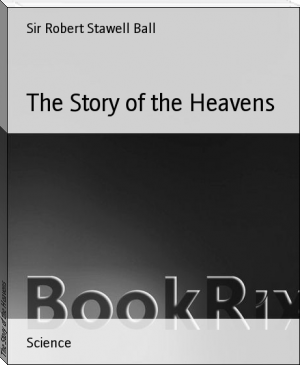
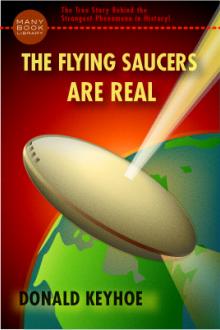

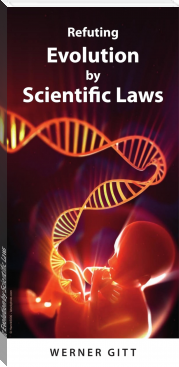
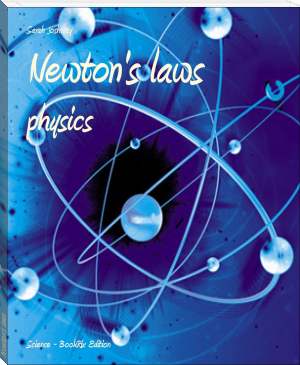
Comments (0)